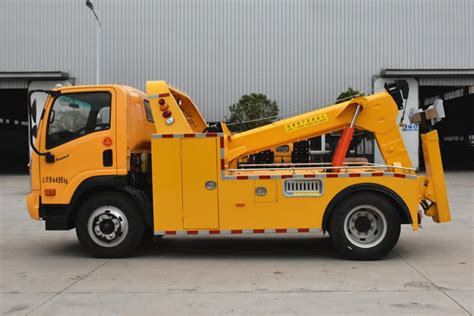清障车价格行情
Title: Understanding the Pricing of Clearing Vehicles
Clearing vehicles, commonly known as debris or clearance trucks, play a crucial role in various industries, including construction, municipal services, and disaster management. Understanding the pricing of these vehicles involves considering several factors that influence their cost. Let's delve into these aspects to provide insights and guidance.
1. Vehicle Type and Size:
Clearing vehicles come in various types and sizes tailored to specific tasks. Smaller vehicles like pickup trucks with mounted debris containers are suitable for lightduty clearing, while larger ones like dump trucks equipped with hydraulic loaders are ideal for heavyduty tasks. The price of a clearing vehicle largely depends on its type and size, with larger and more specialized vehicles typically commanding higher prices due to their capabilities.
2. Equipment and Features:
The equipment and features integrated into a clearing vehicle significantly impact its pricing. Hydraulic systems for lifting and dumping, advanced debris containment mechanisms, and specialized attachments like grapples or vacuum systems all contribute to the overall cost. Vehicles equipped with advanced technology for efficiency and safety may have higher upfront costs but can offer longterm benefits through increased productivity and reduced operational risks.
3. Brand and Manufacturer:
The brand and manufacturer of a clearing vehicle also influence its price. Established brands known for quality and reliability may have higher initial costs compared to lesserknown counterparts. However, investing in a reputable brand often pays off in terms of durability, performance, and aftermarket support. Researching various brands and comparing their offerings can help in finding the best value for your investment.
4. Customization and Addons:
Many clearing vehicles can be customized or enhanced with additional features to suit specific requirements. Customization options may include specialized storage compartments, auxiliary lighting, or upgraded engine specifications. While these customizations add to the initial cost, they can enhance the vehicle's functionality and versatility, making it better suited to unique clearing challenges.
5. Maintenance and Operating Costs:
When considering the price of a clearing vehicle, it's essential to factor in maintenance and operating costs over its lifespan. Regular maintenance, repairs, fuel consumption, and insurance premiums contribute to the total cost of ownership. Opting for vehicles with fuelefficient engines, durable components, and comprehensive warranty coverage can help minimize longterm expenses and maximize return on investment.
6. Regulatory Compliance and Safety Standards:
Clearing vehicles must comply with various regulatory and safety standards, which may affect their pricing. Vehicles equipped with safety features such as backup cameras, collision avoidance systems, and adherence to emission standards may have higher upfront costs but can offer enhanced safety and regulatory compliance benefits. Prioritizing safety and compliance is crucial to avoid potential liabilities and ensure smooth operations.
7. Market Demand and Economic Factors:

Market demand and economic conditions can also influence the pricing of clearing vehicles. During periods of high demand or economic growth, prices may rise due to increased competition and manufacturing costs. Conversely, economic downturns or oversupply in the market may lead to price reductions or promotional offers from manufacturers. Monitoring market trends and timing purchases accordingly can help in securing competitive pricing.
Conclusion:
The pricing of clearing vehicles is influenced by various factors, including vehicle type and size, equipment and features, brand reputation, customization options, maintenance costs, regulatory compliance, and market dynamics. By considering these factors comprehensively and conducting thorough research, buyers can make informed decisions to acquire clearing vehicles that meet their specific needs while maximizing value and efficiency in their operations.
This comprehensive understanding of clearing vehicle pricing can guide buyers in navigating the market effectively and making strategic investments aligned with their business objectives.









